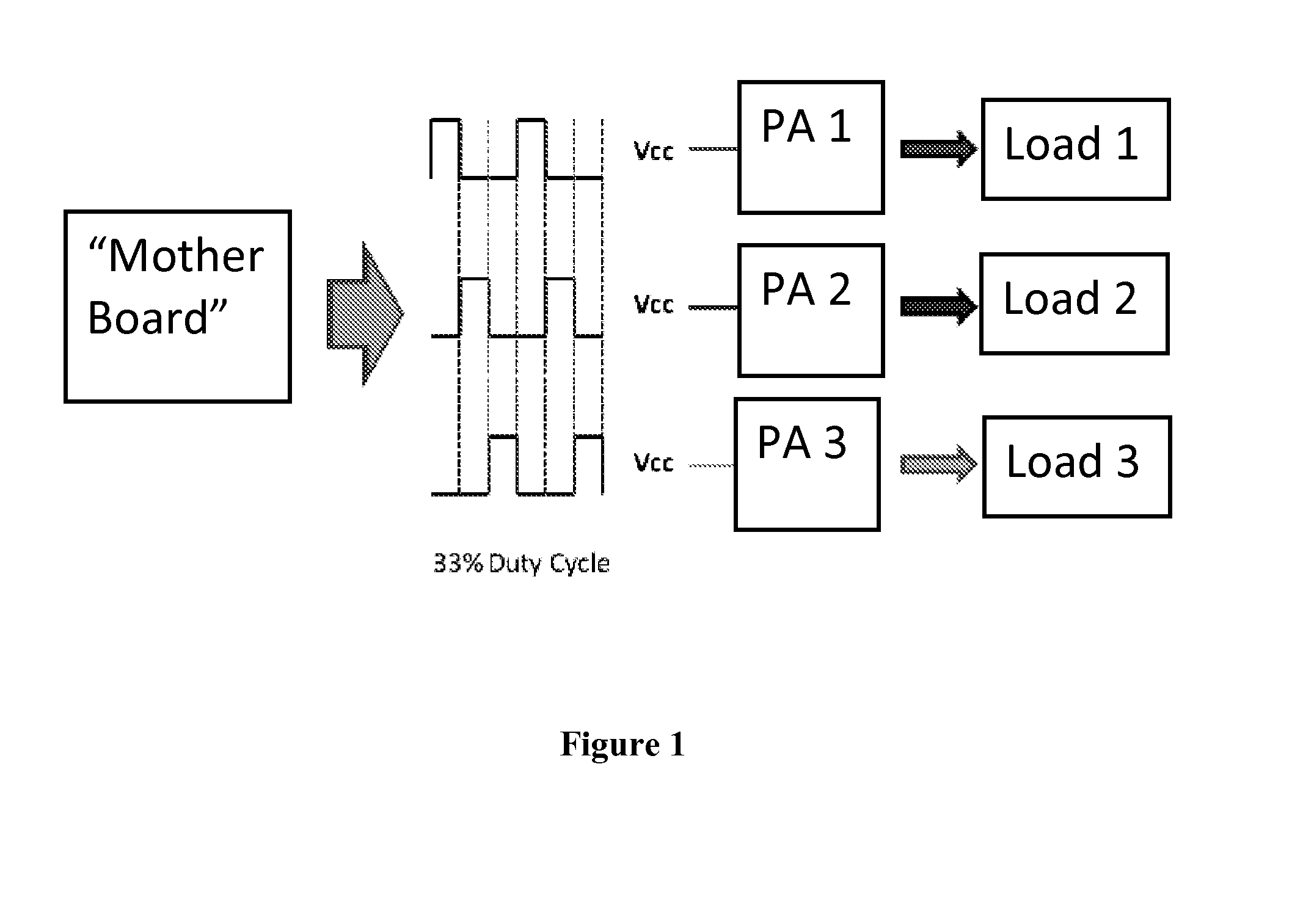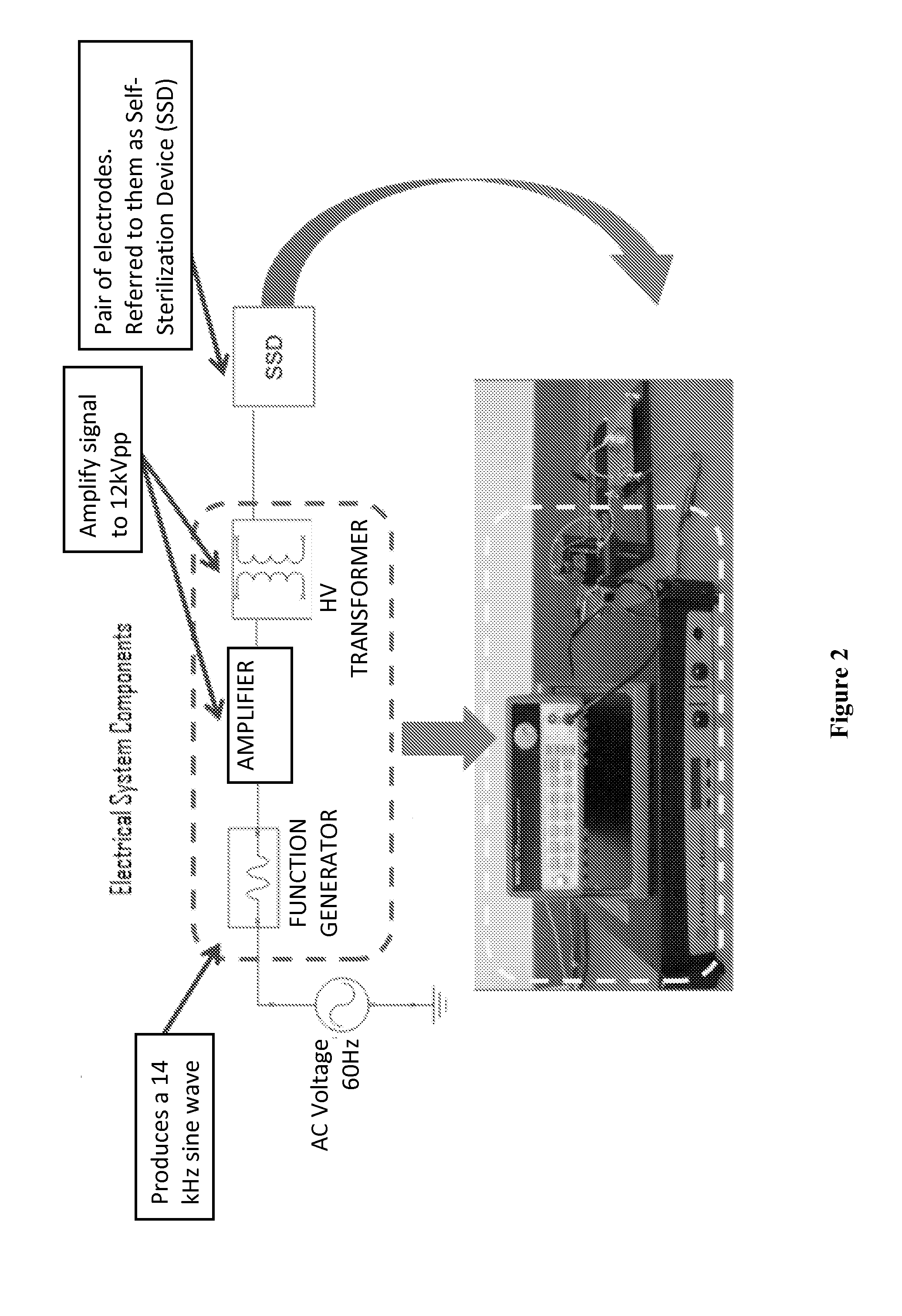Method and apparatus for providing power
a technology of power supply and power supply, applied in the direction of dc-ac conversion without reversal, plasma technique, transmission system, etc., can solve the problems of high manufacturing cost, high energy consumption, and long sterilization time, and achieve the effect of reducing voltage, less time, and increasing reliability
- Summary
- Abstract
- Description
- Claims
- Application Information
AI Technical Summary
Benefits of technology
Problems solved by technology
Method used
Image
Examples
example 1
[0113]Referring to FIG. 5, a self-sterilizing device (SSD) including electrodes separated by a dielectric material is shown. Such a SSD can be used as a load for a power supply unit of the subject invention. The size of the SSD in FIG. 5 is 1.5 inches wide by 1.5 inches long.
[0114]Using an impedance analyzer (HP 4192A LF), the impedance of the device was measured to be 7 pF with high resistance (MΩ range). However, this is a low signal impedance measurement, which changes when plasma is generated on the SSD.
[0115]FIG. 6 shows an example of a load model for high frequency operation. The values of CP and RP were determined using Equations (1) and (2). IO and QO were determined from their respective Lissajous diagrams, which are obtained from experimental data. The setup used to extract these two values is shown in FIG. 7. Using FIG. 8 and Equations (1) and (2), CP and RP were evaluated as 11 pF and 1.2 MΩ, respectively.
CP=IO / (2πfVg) (1)
RP=Vg / (2πfQO) (2)
[0116]The system must be able ...
PUM
 Login to View More
Login to View More Abstract
Description
Claims
Application Information
 Login to View More
Login to View More - R&D
- Intellectual Property
- Life Sciences
- Materials
- Tech Scout
- Unparalleled Data Quality
- Higher Quality Content
- 60% Fewer Hallucinations
Browse by: Latest US Patents, China's latest patents, Technical Efficacy Thesaurus, Application Domain, Technology Topic, Popular Technical Reports.
© 2025 PatSnap. All rights reserved.Legal|Privacy policy|Modern Slavery Act Transparency Statement|Sitemap|About US| Contact US: help@patsnap.com



